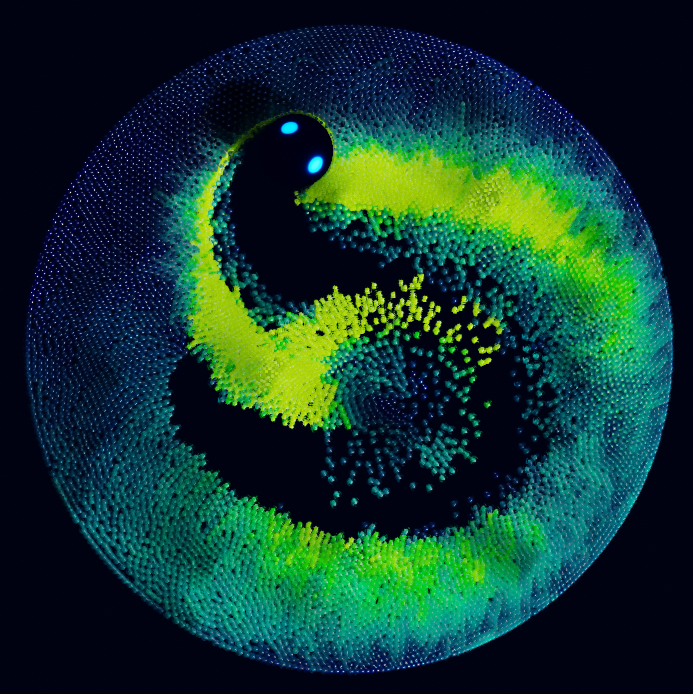Nodos de simulación¶
Through the use of Simulation Zones, Nodos de geometría can be used to create custom physic simulations through nodes. Simulation zones allow the result of one frame to influence the next one. That way even a set of simple rules can lead to complex results, with the passing of time. The most common type of them is physics simulation, with specific solvers for physical phenomena.
Ver también
Leer más acerca de las Zonas de simulación
Captura¶
The simulation is automatically cached during playback. The valid cache can be seen as a strong yellow line in the timeline editor. This allows for animators to quickly inspect all the previous frames of a simulation.

Cached frames in the Timeline.¶
When the result is ready to be sent to a render-farm, it can be baked to disk. This allows for the simulation to be rendered in a non-sequential order.

Panel Nodos de simulación en las propiedades de Dinámicas.¶
Nota
Al capturar se capturarán todas las simulaciones de todos los modificadores de los objetos seleccionados.
- Calcular hasta fotograma
Calculará las simulaciones en los modificadores Nodos de geometría, desde el inicio hasta el fotograma actual.
- Capturar
Capturará las simulaciones en los modificadores Nodos de geometría. Para poder capturar la simulación, el archivo .blend deberá haber sido guardado en el disco. La ubicación en donde hubiera sido guardado el archivo determinará dónde se guardarán los datos capturados. La carpeta en donde se guardarán los datos capturados podrá ser modificada para cada modificador, en las dependencias internas de cada modificador.
- Borrar caché de simulación
Borrará las simulaciones en caché o capturadas en los modificadores Nodos de geometría
- Caché
En casos en donde el fotograma actual sea el único relevante, será posible elegir no almacenar el resultado en memoria, para conservarla.
Ejemplos¶
Al combinarse con el Nodo Identificador del más cercano, esto podrá usarse para realizar una serie de simulaciones basadas en esferas.

Archivo de ejemplo de Identificador del más cercano de Sean Christofferson.¶